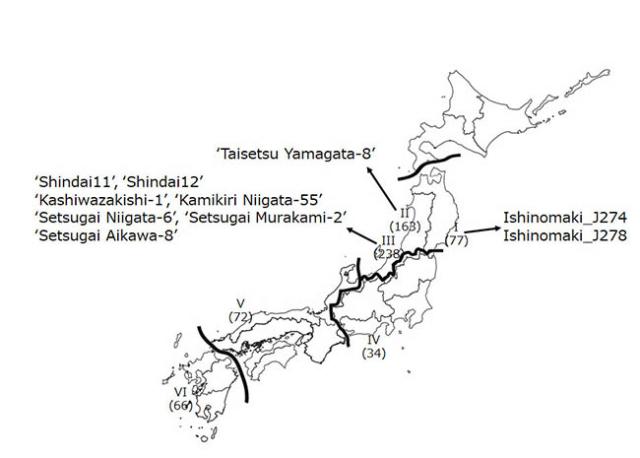Home > Research > Research Results > Research Results 2020 > New lines of male sterile sugi discovered using DNA markers
Update:November 5, 2020
Main content starts here.
New lines of male sterile sugi discovered using DNA markers
| Article title |
Marker-Assisted Selection of Trees with MALE STERILITY 1 in Cryptomeria japonica D. Don |
|---|---|
| Author (affiliation) |
Yoshinari Moriguchi (a), Saneyoshi Ueno (b), Yoichi Hasegawa (b), Takumi Tadama (a), Masahiro Watanabe (a), Ryunosuke Saito (a), Satoko Hirayama (c), Junji Iwai (d), Yukinori Konno (e) (a) Niigata University, Niigata, Japan. (b) Department of Forest Molecular Genetics and Biotechnology, FFPRI, Tsukuba, Ibaraki, Japan. (c) Niigata Prefecture Niigata Regional Promotion Bureau, Niigata, Japan. (d) Niigata Prefectural Forest Research Institute, Murakami, Niigata, Japan. (e) Miyagi Prefectural Forest Research Institute, Sendai, Miyagi, Japan. |
| Publication Journal |
Forests, 11(7), 734, July 2020 DOI:10.3390/f11070734( External link ) |
| Content introduction |
Male sterile sugi (Cryptomeria japonica) is also called pollen-free sugi, since it is unable to disperse mature pollen due to a dysfunction of one of the genes relating to pollen formation. If the gene has one normal wild type (allele), it functions normally and pollen will be produced, even though the individual has one mutant type. Thus, DNA markers, which discern the type of the gene, can be used to detect clones with normal pollen but with mutant gene types. In the present study, diagnostic DNA markers for the male sterility gene (MS1) were used to analyze 603 individuals from six prefectures (Niigata, Yamagata, Miyagi, Tottori, Shizuoka, and Kumamoto) and 47 individuals from a natural population in Miyagi prefecture, and we found eight individuals with mutant MS1. Sugi grows widely over the Japanese archipelago and has adapted well to each local district’s climate. Therefore, the collection of male sterile lines from each district will help to efficiently develop male sterile cultivars that are well-suited for each local climate and utilization purposes. DNA markers are an efficient means to search for male sterile lines.
|
Copyright © Forest Research and Management Organization. All rights reserved.

